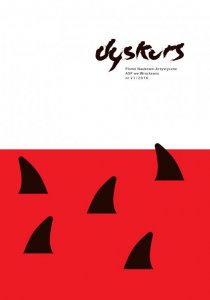GRUPA DZIAŁANIA I GRUPA 111 (1977– ...) „DZIAŁANIA LUCIMSKIE” – SPÓŹNIONA RECEPCJA
ACITIVY GROUP AND GROUP 111 (1977-...) ‘LUCIM ACTIVITIES’ : DELAYED RECEPTION
Author(s): Monika Weychert WaluszkoSubject(s): Philosophy, Language and Literature Studies, Fine Arts / Performing Arts, Political Philosophy, Social Philosophy, Sociology of Art
Published by: Akademia Sztuk Pięknych im. Eugeniusza Gepperta we Wrocławiu
Keywords: SPOŁECZNY KONTEKST SZTUKI; DZIAŁALNOŚĆ ARTYSTYCZNA; PERCEPCJA SZTUKI; PRZEWRÓT ETNOGRAFICZNY; SOCIAL CONTEXTS OF ART; ARTISTIC ACTIVITY; ART. PERCEPTION; ETHNOGRAPHIC REVOLUTION
Summary/Abstract: Artistic activities in Lucim, undertaken in the past and still continued, remainone of the most spectacular as well as the least recognized phenomena in Polish art. In 1977, Bogdan and Witold Chmielewski, Andrzej Maziec, Wiesław Smużny and Stanisław Wasilewski decided to focus in their work on Polish countryside. Together with the people of Lucim, the Grupa Dzialania/Activity Group/ and then Group 111 (without Andrzej Maziec and Stanisław Wasilewski) engaged in actions of a very complex nature: mysticaland ritual, artistic, animating and cultural, social and research-oriented. Without doubt, the long and active presence of the artists in Lucim canbe seen in the context of the interweaving of anthropology and art in the late 20th century. Various activities undertaken by the artists and local people belonged to one of three main trends. The first one – research-oriented, ethnographical and social – became an instrument for defining the needs of the Lucimcommunity, receiving and evaluation the activities. The second one was the New Folk Art, in opposition to state-controlled cultural events in thePeople’s Republic of Poland and work of other artists. This approach was totally different from the search of relics and sources popular at the time,which turned folk art into a phenomenon to be displayed in museums and an object of vivisections and explorations. The Lucim group did their best to create real culture of the countryside consistent with the tastes of local people. And finally, there was the 11-point manifesto of social art, published in 1980. Socially-oriented activities made it possible for the artists to go beyond the field of art – there were numerous such cases: formulating premises for the Centre for Social and Artistic Activities, the erection of the Folk House and collaboration with scientists (rural sociologists from a number of European centers).
Journal: DYSKURS Pismo Naukowo-Artystyczne ASP we Wrocławiu
- Issue Year: 2016
- Issue No: 2 (21)
- Page Range: 174-203
- Page Count: 30
- Language: Polish

